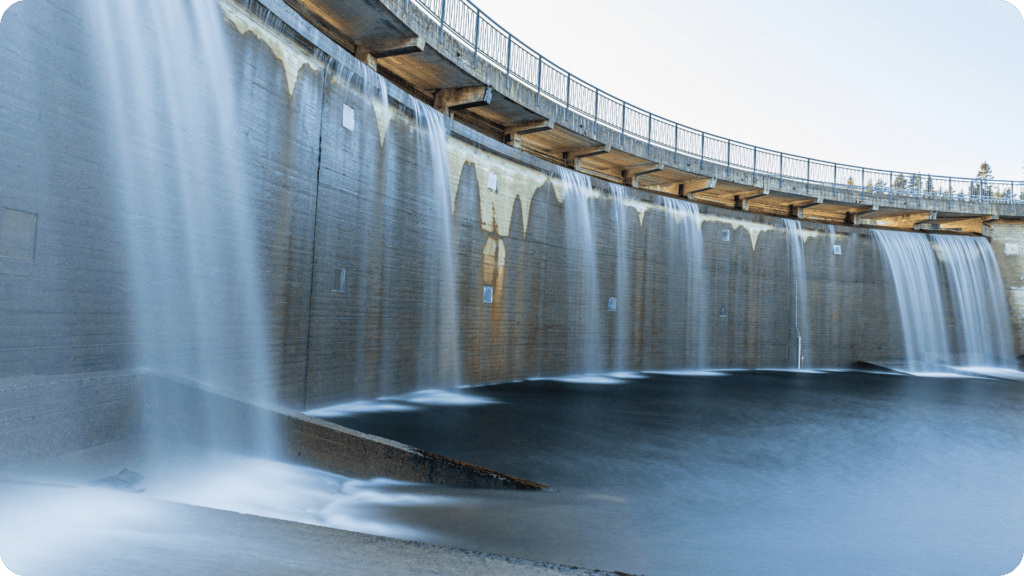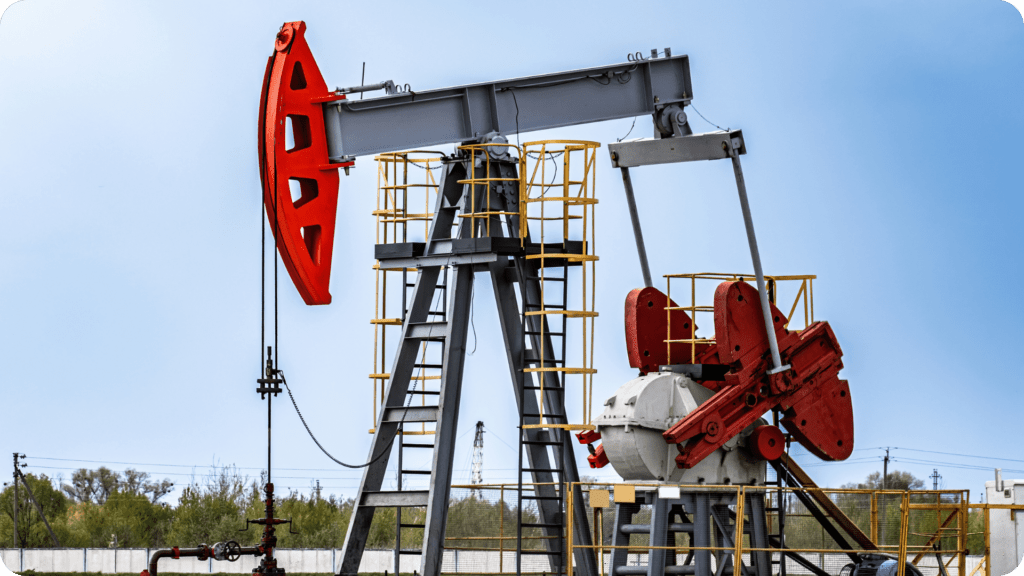Introduction
The upstream oil and gas industry is defined by its complex operations like exploration, production, drilling, extraction, etc. In such a case, innovation has now become the key for sustainability, cost-effectiveness, and efficiency in an environment that is constantly changing.
Standard methods of exploration, reservoir management, and production optimization are now being transformed by Artificial Intelligence technologies such as deep learning, robotics, and advanced algorithms.
This blog mainly focuses on the ‘Transformative Power of Artificial Intelligence in Upstream Oil and Gas’ highlighting its potential for exploration, drilling, production, and beyond.
With the use of predictive analytics and machine learning algorithms, artificial intelligence (AI) enables operators to make well-informed decisions quickly, improving profitability, productivity, and safety.
Let’s understand the reasons for adopting AI in the upstream oil and gas industry.
Top 7 Reasons for Adopting Artificial Intelligence
As AI analyses massive amounts of data, provides real-time insights, and optimizes complex processes, it is a compelling solution for upstream oil and gas operations. Here are a few reasons for it:
1. Predictive analytics: AI algorithms help in forecasting production performance, reservoir analysis, and equipment failures for proactive decision-making.
2. Reservoir modelling: Drilling and extraction plans can be optimized for better resource recovery using AI algorithms.
3. Autonomous drilling systems: Drilling operations can be automated with the help of AI, which can be used to improve drilling efficiency by instantly modifying parameters.
4. Wellbore stability analysis: Drilling operations involves lesser risks with AI’s ability to forecast wellbore stability problems through the analysis of geological and drilling data.
5. Large Data Sets: Production records, well logs, and seismic surveys all have enormous amount of data that can be analysed by AI to find correlations, and new research areas.
6. Seismic Imaging: The identification of oil and gas reserves can be done with greater accuracy because of AI-powered seismic imaging, which improves mapping accuracy.
7. Proactive maintenance: It can be carried out in advance, reducing downtime and increasing overall production efficiency due to AI’s ability to predict equipment failures.
Do you still not believe in the benefits of AI in the upstream sector of the oil and gas industry?
Just skim through to change your mind about your business’s future with AI transformation.
Artificial Intelligence in upstream oil and gas: Use Cases
Artificial intelligence has become an innovator in technology, offering solutions that will improve decision-making, streamline workflows, and provide insightful information. Let’s look at some of the interesting use cases of artificial intelligence in upstream oil and gas operations.
1. Reservoir Characterization and Management

Large reservoirs are difficult to understand because of inadequate or absent data, which makes accurate characterization challenging. Information gaps prevent detailed comprehension and delay critical decision-making processes in reservoir management. Because of the complex and multifaceted nature of this industry, innovative approaches are required to reduce errors and improve efficiency.
Solution:
AI is the answer. With the use of SAP Custom Code Analysis and machine learning algorithms, AI’s platform combines a variety of data sources (seismic, well logs, and production data) to produce incredibly detailed reservoir models. This makes:
- Improved comprehension of reservoirs: Locate untapped resources, arrange wells optimally, and more precisely forecast production potential.
- Lower exploration risk: By more confidently identifying promising areas, we can reduce the number of dry wells and increase the success of exploration.
Benefits:
- 75% of the total reservoir volume is effectively utilized.
- 20% Improved Project Collaboration and Efficiency.
2. Predictive Maintenance and Downtime Reduction

Unexpected equipment failures can result in expensive downtime and increased safety risks, which makes them a serious threat to the oil and gas industry. To achieve operational resilience, careful preventative measures must be taken in addition to quick reactions for minimizing disruptions. This requires handling complex technical obstacles like implementing predictive maintenance and detecting irregularities in real time.
Solution:
The platform of AI evaluates sensor data from pipelines, drilling rigs, and other equipment to anticipate possible malfunctions before they happen. This renders possible:
- Proactive maintenance: Predicting failure probabilities and scheduling maintenance interventions to minimize downtime and maximize equipment lifespan.
- Enhanced safety: Prevent incidents by recognizing and addressing possible safety hazards, safeguarding both the environment and employees.
Benefits:
- 15% Reduced maintenance costs.
- 90% or higher accuracy in anticipating equipment failures with AI.
3. Real-time Drilling Optimization and Wellbore Integrity

In oil and gas operations, one of the biggest challenges is utilizing drilling trajectory optimization to continuously modify the wellbore path in real time. The intricate detail of this dynamic process adds to the operational complexity and create difficulties to getting the best outcomes. The complexities of these modifications necessitate intense care on every detail and introduce possible risks, which must be carefully managed to guarantee a smooth and successful drilling operation.
Solution:
The platform developed by AI evaluates geological data and downhole data in real-time and makes recommendations for:
- Dynamic drilling path adjustments: To ensure effective drilling and minimize deviance from the target reservoir, optimize the wellbore trajectory in response to evolving geological conditions.
- Proactive management of wellbore integrity: Involves spotting possible problems with wellbore stability and suggesting solutions before they become expensive failures.
Benefits:
- 15% Increase in Drilling efficiency.
- Up to 20% Reduction in Deviation from Target Reservoir.
4. Seismic Image and Surveying

It is very difficult to identify complex geological aspects from unstable seismic data. Manual interpretation is essential and requires a high level of skill from geoscientists. Their ability to detect, ensures the careful identification of subsurface features, which is essential for making well-informed exploration decisions. The accuracy and effectiveness of exploration efforts run the risk of being compromised in the lack of such expertise.
Solution:
A platform driven by AI and designed specifically for seismic interpretation helps geophysicists in multiple ways:
- Automated Fault and Fracture Detection: Artificial intelligence algorithms examine seismic volumes to detect subtle faults and fractures automatically, thereby decreasing interpretation time and enhancing consistency.
- Seismic Facies Classification: To help geophysicists comprehend reservoir continuity and connectivity, AI divides seismic data into discrete “facies” that represent various depositional environments.
Benefits:
- 30% Reduction in interpretation time.
- 15% Reduction in operational costs related to seismic data interpretation.
Here are the top 4 use cases with its benefits of Artificial Intelligence in upstream oil and gas industry.
Conclusion
In a recent survey conducted by Ernst & Young, it was found that “92% of global oil and gas companies are either currently investing in or have plans to invest in artificial intelligence within the next five years.”
Having SAP in place will be your best option, as it easily incorporates advanced AI capabilities designed specifically for the upstream oil and gas industry.
And that’s where KTern and KaarTech come in as your reliable partners in SAP and AI implementations. We have established ourselves as a trust-worthy partner for the oil and gas industry through successful SAP implementations for 40+ customers globally and 10+ Upstream clients.
Aiming to maximize the potential of your upstream operations, are you prepared to start your AI journey? Then have KaarTech as your best implementation partner.
FAQ’s
What is the role of AI in reshaping upstream oil and gas?
AI in upstream oil and gas revolutionizes exploration, drilling, and production processes. It optimizes decision-making, enhances efficiency, and mitigates risks, fundamentally reshaping the industry’s operational landscape.
Can AI improve efficiency in upstream drilling processes?
Yes, it enhances drilling efficiency by analyzing data in real time, optimizing well placement, predicting equipment failures, and reducing downtime, resulting in cost savings and increased productivity.
What benefits does AI bring to upstream energy companies?
It brings numerous benefits to upstream energy companies, including improved decision-making, enhanced operational efficiency, reduced costs, predictive maintenance, and optimized exploration, ultimately leading to increased profitability and competitiveness.
Can AI contribute to cost savings in upstream oil and gas operations?
Yes, it enables cost savings in upstream oil and gas by optimizing drilling processes, predicting equipment failures, reducing downtime, enhancing reservoir management, and improving overall operational efficiency through data-driven insights.
